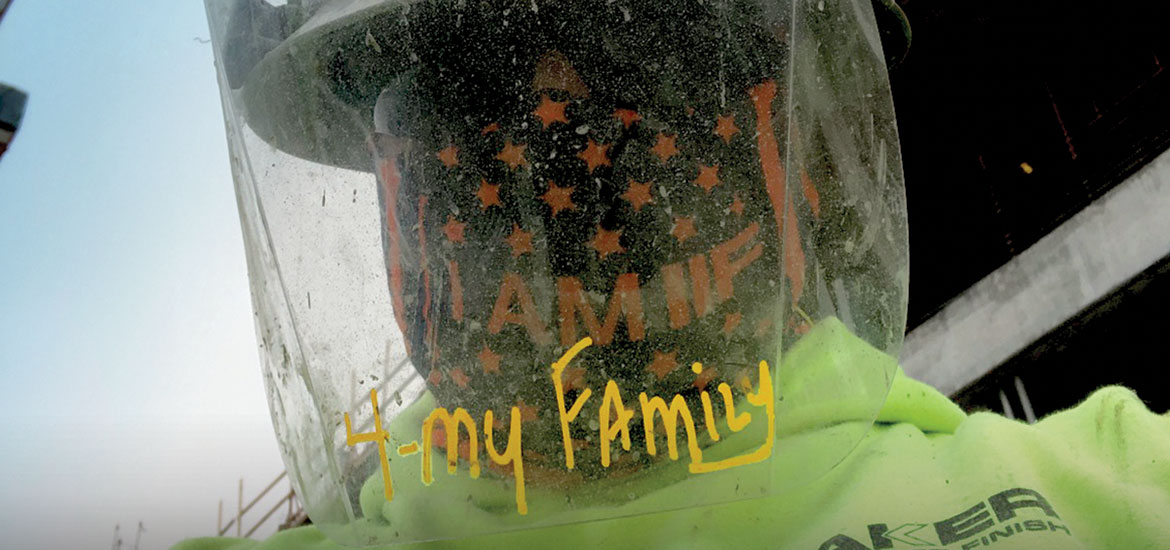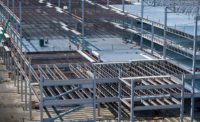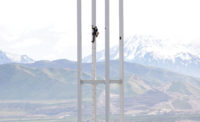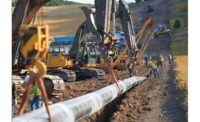In the midst of one of the strongest markets in memory, the COVID-19 pandemic hit the industry like a freight train, throwing firms into confusion.
During the prolonged period of uncertainty, design firms, construction managers and many general contractors were left scrambling for answers on how to manage and market through the crisis. But for subcontractors and specialty trade contractors, the problem was more acute—their workers and field supervisors were on jobsites and had to be directly protected while trying to continue to work.
The scale of the market turnabout can be seen in the results of this year’s ENR Top 600 Specialty Contractors list.
As a group, the Top 600 generated revenue of $151.27 billion in 2019, up 11.9% over $135.20 billion in 2018. Revenue fhad been experiencing double-digit growth for the past four years, and through the end of last year rose 128.2% since the market recovery began in 2011.
But the pandemic has brought that growth to a grinding halt and caused companies to wonder how to deal with the crisis.
Some specialty contractors had plans already in place to deal with the general situation. O’Connell Electric Co. began preparations in early February, before anyone had any solid understanding of COVID-19. “At that time, we dug out and dusted off our uniform Pandemic Response Plan, and began to update it with current names, locations and actions we would take in the event that there became a need,” says Victor E. Salerno, CEO. He notes that the initial eight-page plan now has grown into a 69-page document that has become all-inclusive and dynamic.
Another firm that was quick off the mark was Menard Group USA. Owned by French contractor Vinci, it was receiving intelligence on the impact of the virus ahead of the directives in the U.S.
“In mid-March we took an immediate stop on all of our active sites across the country for about two weeks to retool our field activities, procure PPE [personal protective equipment], train our site crews, write and issue new standard operating procedures and fully reinforce the behaviors necessary to protect field staff and their families,” says Seth Pearlman, Menard’s CEO. “This was a difficult and costly decision, and it was ultimately respected by the bulk of our staff and clients.”
C3M Power Systems LLC also reacted quickly, taking multiple key team members out of operations to focus on COVID-19. “Although it was a sacrifice, we felt it was a necessity and their central effort benefited our entire team. They developed new processes, procedures, PPE and roles to keep our jobsites, offices, and people working safely and efficiently,” says Chuck Tomasco Jr., senior vice president.
|
Related Links |
Taking Care of Employees
One of the first direct responses to the virus was protecting employees. Many firms initially saw a shortage of field personnel. “They were scared, they wanted to protect their families and themselves and they were receiving additional employment funds through the government,” says Ryan Denver, president of Select Demo Services LLC. Now that people are more educated on COVID-19 and understand the necessary steps to keep themselves and their families healthy, the workforce has come back in full force, he says.
Yet even now, craft labor is uneasy about going to jobs. “This is made worse for our traveling crews. Inconsistent policy in various jurisdictions compounds the challenges,” says Dave Crumrine, president of Interstates Inc. He says the firm has been able to work with core groups well to enable work to continue, thanks to “a ton of support work and communication.”
For many specialty contractors, existing safety programs and teams helped reassure workers at risk. For example, Limbach Holdings Inc. has extensive safety program teams that immediately mobilized to provide gaiters for all workers and institute daily temperature monitoring for people on site. “We had 30 people testing positive for COVID-19 and had 110 go into quarantine. But none of them got the virus on site,” says Charles A. Bacon, CEO.
“In February, we dug out and dusted off our uniform Pandemic Response Plan, and began to update it with current names, locations and actions we would take in the event that there became a need.”
– Victor E. Salerno, CEO, O’Connell Electric Co
Worker health has become a priority for specialty contractors like never before. This year “has certainly heightened our awareness of overall co-worker health,” says Brad Wucherpfennig, president of Baker Construction Enterprises. The firm quickly mobilized a COVID-19 leadership task force with representatives from all of its businesses. The cross-functional team allowed it to act quickly and make thorough decisions.
PPE to protect against transmission of the virus has become a priority. “Our company has spent around $100,000 so far this year on additional PPE measures to make sure we are meeting customer requirements,” says Emanuel A. Paris IV, senior project manager at Alex E. Paris Contracting Co. Inc.
Crisis teams to react to potential virus cases have also become common. Harris created an incident response team with full authority to monitor daily cases and make changes to recommendations and requirements to act quickly and decisively. “This helped us keep the number of cases to 42 out of an employee base of 2,000,” says Michel Michno, Harris’ COO. He also notes that Harris has focused on COVID-related research and data and published white papers and videos that were used for training.
Many firms have instituted detailed guidelines to protect employees from exposure to airborne pathogens. McKinstry has created a set of rules and standards for employees returning to work in its offices. “Everyone must fill out a daily health questionnaire before coming in, face masks are mandatory, building capacity has been decreased to a maximum of 40%, travel is restricted to essential travel only, to name a few of our new guidelines,” says Mark Jonson, vice president and general manager.
For some firms, prefabrication facilities have greatly helped to protect employees. “Our 30,000-sq-ft prefabrication facility allows us to limit the number of electricians on site. It also allows us to maximize our social distancing, all while maintaining the same levels of productivity,” says Anthony E. Mann, CEO of E-J Electric Installation Co.
It’s not just COVID that is causing firms to worry. “We also have placed a large focus on the mental health of our employees. The stress and pressure that exist now are far greater than before,” says Keith Douglas, COO of Rosendin Electric. He notes that many employees work from home while taking care of their families, teaching their children and looking after their loved ones who may be considered high risk. Rosendin is trying to help them adjust.
Many firms also are working to help employees get through the crisis financially, as well as in good health. HB Global LLC assisted employees by paying out their earned bonuses early, paying them sick time to get tested or stay home if they were exposed or a family member was ill, says Bob Whalen, CEO. “We gave everyone a health care holiday for four weeks. Today, the residual effect of these actions is that our leadership is even more aligned, we have an increase of trust with our employees and we continue to operate safely in a COVID environment and do it with excellence.”
All these moves come with a cost. “We have seen a 7% to 10% productivity impact due to site access, distancing, tool cleaning and extra administrative processes,” says Michno of Harris.
Jeff Marrs, CEO of ACCO Engineered Systems, says there has been a slight impact on productivity due to the added safety measures implemented at jobsites. “However, those are well worth it if we can keep our people and their families safe from contracting the virus,” he adds.
Staffing Up in a Down Market
Before COVID-19 hit, staffing was the top concern of specialty contractors. However, with so many projects canceled or deferred, many have resorted to layoffs and furloughs, easing the staffing concerns. In this year’s survey, 62.5% said they were concerned about staffing projects, compared to 74.9% last year, the first time that percentage has had a major drop since 2011.
Many firms agree that staffing is not an immediate concern. “With higher unemployment, the quantity of available trade employees is not an issue; however, finding well-qualified workers is an ongoing challenge,” says Michael Cannon, CEO of KHS&S Contractors-East Coast.
Many firms agree that staffing is not an immediate problem, but they are looking ahead. “We haven’t seen a lot of people deciding not to come to work. Many are grateful to still have a job,” says Ted Lynch, CEO of Southland Industries.
But, while many other firms with delayed or canceled projects are now laying off people, Southland continues to hire. “Now is the time to be opportunistic in recruiting people,” Lynch says.
Most firms say that any easing of staff shortages will be a short-term situation. “Pre-COVID, our industry was struggling with leadership attrition. The effects of the pandemic have only amplified this,” says Greg Gossett, CEO of ERMCO Inc.
Gossett notes that, in this time of uncertainty, quality people are not interested in making career changes. “For organizations that are in a state of growth, this is making it difficult to secure the human capital needed to support the opportunity to grow. It also drives the importance of maintaining an excellent company culture to protect current team members from leaving.”
Market Plunge
COVID-19 has had a jarring impact on markets. Many firms saw their workloads drop dramatically and only now are beginning to see a recovery. “Job sites were shut down, some projects that were slated to start were canceled,” says Len Monfredo, principal at E.M. Duggan Inc. “The economy slowly opened up and we were able to get most of our employees back to the job sites and the office. We lost a quarter of revenue due to the pandemic.”
Many firms have similar stories. “Near the end of May, 105 jobs totaling $79 million across our five divisions had been canceled or delayed,” says Whalen of HB Global. He is seeing some movement and recovery now, but the impact has been significant. “The entertainment and hospitality sectors have been hit especially hard.”
“We had 30 people testing positive for COVID-19 and had 110 go into quarantine. But none of them got the virus on site.”
– Charles A. Bacon, CEO, Limbach Holdings LLC
Some firms working in the oil and gas market have suffered a “double whammy” when a dispute among oil producing countries in February led to a glut in oil on the market, plunging oil prices, followed by the pandemic, which resulted in a rapid decline in consumption, says John W. Zwack, vice president for business development and marketing for CIC Group, the parent company of Nooter and Wyatt.
Zwack says the outlook now for refinery work for Nooter will remain soft throughout 2021. Even many refinery turnarounds have been delayed. However, he says that Wyatt, CIC’s nonunion industrial service group, has a more positive outlook. The firms now are looking at the renewable energy market, particularly wind power, to diversify.
Some contractors have felt less of the impact because of the markets they serve. “When COVID-19 hit in early March, we experienced some short-term shutdowns, but fortunately our work is mostly in open air and we were deemed essential, so our projects were able to proceed,” says Rob Strobel, CEO of Lithko Contracting LLC.
Many companies serving a variety of markets have seen some positives mixed in with the general gloomy outlook. Bacon of Limbach notes that four out of eight of the firm’s principal markets are “going gangbusters.” He says the industrial market is strong, with manufacturers continuing to “on-shore” plants rather than build overseas, and the tech market and data centers are flourishing.
Limbach also has seen a surge in health care work. “Now that elective surgeries are being performed again, increasing health care companies’ cash flows, hospitals are beginning to plan for new facilities. We have one healthcare customer that just announced plans to build 17 new facilities,” says Bacon.
Some customers are experiencing positive growth from the pandemic as consumer demand and spending has shifted. For example, “consumer goods manufacturers, including paper products, food and cleaning products are thriving, [and] e-commerce, home entertainment and home improvement also appear to be faring well,” says Timothy M. Dunlap, COO of CentiMark. “Conversely, our customers in hospitality and both office and retail commercial real estate are not as fortunate.”
Diversity of Markets
A diverse market portfolio is seen as a key to staying financially healthy. While sectors like commercial office and hospitality have struggled, distribution and data centers have surged. The firms hardest hit have been those tied closely to a specific market. “We estimate that activity has been reduced by 60% or more,” because of its close ties to the oil and gas industry, says Jerrit Coward, CEO of Expanse Electric.
KHS&S had a big backlog of hospitality and amusement park work at the start of 2020. “A large portion of these projects has been postponed, suspended or scaled back, resulting in about a 25% reduction in our 2020 projections,” says Cannon.
“We also have placed a large focus on the mental health of our employees. The stress and pressure that exists now are far greater than before.”
– Keith Douglas, COO, Rosendin Electric
The impact of the slowdowns has been inconsistent across regions, so a wider regional footprint has helped some firms. “The Bay Area has seen the most significant impact, with many projects coming to a halt or canceled,” says Douglas of Rosendin, but projects have largely continued outside of that area, he says.
Many firms now are moving into new markets, or expanding their presence in current markets, to blunt the impact of the crisis. “With the changing availability of work in some markets, we have enhanced our resume in the data center, chip manufacturing and medical markets. We have extensive experience in each and believe those areas will expand over the next several years,” says Wes McClure, CEO of Wilson Electric.
Firms are not just looking to diversify the markets they operate in, but also their range of services. “Starting a Heavy Civil Demolition Division and bringing on a tenured heavy-civil team has allowed us to win and perform work that we would have never chased in the past,” explains Denver of Select Demo.
Going Forward
With pandemic effects still raging, many firms are reporting market uncertainty both short and long term. “Do you have an end date for [COVID-19]?” asks Matthew Englert, co-COO at Rosendin Electric. “We really don’t know what projects will be canceled, delayed or fast-tracked six months from now.”
Crumrine of Interstates is also uncertain about the future. “We don’t believe there will be a clear end to the crisis,” he says, adding that many working assumptions will change permanently, so his firm is preparing employees and systems to be successful in a new environment, whatever may come.
Some firms fear that many effects may not be felt until 2021. “Most of [our clients] are taking some additional time to evaluate the long-term impacts of the market and where those funds are best allocated based off of current conditions,” says Tony Bond, president of BOND Civil & Utility Construction. He expects a market decline in 2021, as many of those customers are pushing work into 2022.
“Now is the time to be opportunistic in recruiting people.”
– Ted Lynch, CEO, Southland Industries
Anxiety heightened by uncertainty around the results of November’s presidential election is a major complication in assessing recovery
“Customers seem to be deciding whether to release their budgets or not which is extremely dependent on the upcoming election and which candidate wins. The two candidates have very different approaches for their policies when it comes to energy and infrastructure in the U.S.,” says Paris of Alex E. Paris Contracting.
David Lyon, vice president at McKamish Inc., worries that the biggest impact on the workforce will be in 2021. “We were fortunate to keep most of our staff during the lockdown,” he says, but adds the firm may be unable to keep all field staff in early 2021, due to an anticipated slowdown.
Not everyone is seeing more darkness on the horizon, however.
Some markets and regions have stayed strong during the pandemic, and that generated some optimism amongst firms. “For the Denver and Austin areas, I continue to see rising housing markets and a steady flow of incoming people, so it is a strange time,” reports Seth Anderson, CEO of Weifield Group Contracting. He sees a recovery in the first quarter of next year. “We feel the market is going to recover fairly nicely after the crisis ends—so we are sharpening our saws and getting the team ready for the next wave.”
Many firms are preparing for the inevitable turnaround, even if still sometime in the future. “We are insuring our financial and human resources are well positioned for a comeback by preserving capital, investing in team training and enhancing our Lean Construction processes,” says Cannon of KHS&S. “We are avoiding the narrow-minded view that everything will return as it was post COVID-19, and we are poised and eager to take advantage of new market opportunities.”
The industry has experienced downturns, even sudden ones, in the past. But few have hit the industry as widely or as brutally as COVID-19.
This has led some firms to be reflective.
“When crisis hits an organization, the soul of your company is laid bare,” says Whalen of HB Global. “The COVID-19 pandemic has proven to be the ultimate test. Our people determine how well and how safely we serve businesses and our communities. Our employees continue to persevere through this bizarre situation.”







Post a comment to this article
Report Abusive Comment